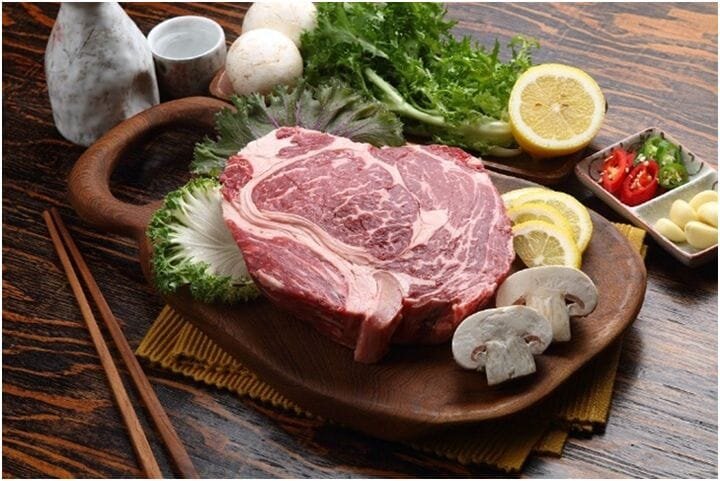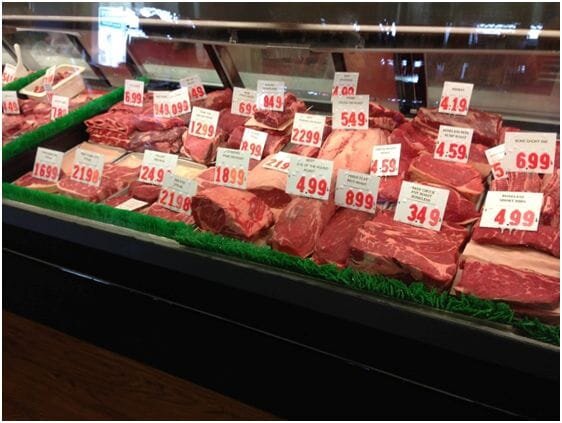
Charles Goulding and Greer Veon examine the possibility of 3D printed steaks.
Consumers within the global marketplace hold high expectations for food options, but most importantly for steak.
Those who work within the steak industry see high profits among consumers who are asking for the meat in restaurants or at home. Mail-order companies like Omaha Steak, Kansas City Steak, and Chicago Steak understand that customers are willing to pay high price points in exchange for receiving the finest cuts of sirloin or prime rib on their doorstep.
Likewise, the same expectations for meat-free options are growing the alternative meat industry, a sector that experts suggest will reach US$140B in sales over the next decade.
Customers who want vegetarian and vegan alternatives for traditional meats are looking to companies to produce these quality plant-based products. Beyond Meat, an alt-meat brand worth $21-million dollars currently has breakfast sandwiches in Dunkin’ stores across the nation and holds existing partnerships with supercenters like Target and Costco.
Currently, climate change and health concerns are fueling a technology boom within the alternative meat industry. As conversations surrounding sustainability grow, so do consumers’ demand for meat options that abide by rules for sustainable, cruelty-free, and dietary-friendly. Food technology allows for innovations within those guidelines. Many scientists and startup companies are seeking ways to manufacture meat through machines, most notably meatless steaks. Several applications involving 3D printing are now making waves in how steak can be prepared within the alt-meat industry and thus will open the door for more 3D printing opportunities.
Printing Steak: The Ultimate Alt-Meat
Alt-meat businesses are experiencing a major boom in the marketplace, thanks to growing awareness ranging from personal health to environmental sustainability that drives consumers. Farming livestock has been shown to be a significant contributor to global warming through the release of methane, a greenhouse gas that contributes more emissions than the global transportation sector. Other concerns surround animal cruelty, as many individuals show concern over the livestock’s treatment and living conditions. These debates have pushed for swapping meats with plant-based substitutes that can provide the same experience without the traditional preparation methods. Since plant proteins are more efficient to produce, experts suggest that the sales within the alt-meat company will continue to grow.
![The Impossible Burger [Source: Flickr ]](https://fabbaloo.com/wp-content/uploads/2020/05/Steak2_img_5eb08c506f4c6.jpg)
Though many meat companies now invest in alt-meat products such as those by Impossible Foods, the ultimate test in alt-meat creations is the perfect slab of steak. Providing a real cut of meat creates challenges surrounding taste, texture, attributes, and quantity. Yet, controlling the inside mass of steak would allow control of the texture and flavor.
Redefine Meat Ltd.
![A nice-looking steak [Source: Pexels ]](https://fabbaloo.com/wp-content/uploads/2020/05/Steak3_img_5eb08c50a2673.jpg)
Food researchers at Redefine Meat Ltd., a successful startup lab in Rehvot, Israel, are creating a 3D printer that they claim will produce a meatless steak with such a perfect consistency that many would never notice a difference.
The company looks to supply restaurants, meat distributers, and retailers with both printers and cartridges. The prototype printer, a current leader in the race to produce steaks, can deliver up to five seven-ounce steaks in an hour. Redefine Meat lab’s focus lies in the steak’s fat. Their 3D technology works to replicate the muscle fibers and jelly-like fat consistency. With a printer that can nail the perfect combination of flavors and produce a mass amount in a short time-span, the printer could be revolutionary for those who feel a challenge in this market is the quality of the 3D printer.
![Meat for sale [Source: Flickr]](https://fabbaloo.com/wp-content/uploads/2020/05/Steak4_img_5eb08c50e2bd2.jpg)
Now that the company secured US$6M in funding from major firms including PHW, a big German chicken producer, Redefine Meat seeks to speed the printer’s process in order to sell to restaurants by the end of 2020. Since plant proteins are more efficient to produce than meat, experts suggest that within a few years consumers and businesses may see more meatless and sustainable cuts of steak that simultaneously cut downtime and costs.
Novameat
Serving steak that’s produced from a “start” button on a 3D printer sounds unique, but as Giuseppe Scionti, founder of Spanish startup company Novameat Tech SL, recently stated in an interview with Bloomberg Businessweek, “In the next few years we are sure that [our steak] can be as competitive and even cheaper than normal meat.”
Novameat’s patented 3D technology prints plant-based meat with the same texture as a real steak. The printer distributes plant proteins through syringes to produce cuts of meat that mimic the animal’s muscle tissue. Novameat’s printing machine is unique in that the printer can create whole cuts of muscle and can better imitate meat texture because of the 3D printer’s ability to allow micro-extrusion on a large scale. The technology also opens the door for Novameat to use other substances beside soy.
In late September, the company gained new funding from New Crop Capital; an evergreen fund invested in alternative protein businesses with investments typically ranging from US$50K to US$1M. Dan Altschuler Malek, managing partner at Unovis Partners, which manages New Crop Capital, said in an earlier interview that while multiple plant-based burgers and other patties are now on the market, those working in the alternative protein business are eager to see when the first cuts of steak will hit stores: “Consumers will want to have a choice.”
With the undisclosed amount of funding from New Crop Capital, Giuseppe and his researchers plan on demonstrating more steak prototypes, scaling up their technology and team, and growing their product beyond European borders. Since the technology can adapt to a diverse range of plant proteins to combine and create unique textures of meat, the company hopes to license out the technology to plant-based meat manufacturers within the next five years, as well as possibly optimal “recipes” for ideal meat substitutes. Alternative protein companies that invest in this technology from startups like Novameat and Redefine will likely benefit from the federal R&D tax credit, as described below.
The Research & Development Tax Credit
Enacted in 1981, the now permanent Federal Research and Development (R&D) Tax Credit allows a credit that typically ranges from 4%-7% of eligible spending for new and improved products and processes. Qualified research must meet the following four criteria:
-
Must be technological in nature
-
Must be a component of the taxpayer’s business
-
Must represent R&D in the experimental sense and generally includes all such costs related to the development or improvement of a product or process
-
Must eliminate uncertainty through a process of experimentation that considers one or more alternatives
Eligible costs include US employee wages, cost of supplies consumed in the R&D process, cost of pre-production testing, US contract research expenses, and certain costs associated with developing a patent.
On December 18, 2015, President Obama signed the PATH Act, making the R&D Tax Credit permanent. Beginning in 2016, the R&D credit can be used to offset Alternative Minimum tax for companies with revenue below $50MM and, startup businesses can obtain up to $250,000 per year in payroll tax cash rebates.
Conclusion
As the current trends in faux-meat technology continue to grow, the 3D printing industry will have more opportunities to manufacture new alternative meats and proteins.

